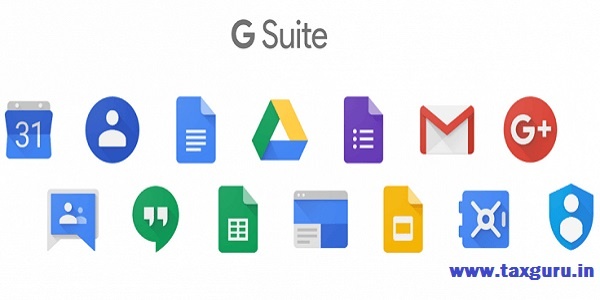
G suite, formerly Google Apps for Work and Google Apps for your Domain, is a brand of cloud computing, productivity and collaboration tools, software and products developed by Google. G suite is the fastest growing messaging and collaboration tool which is useful for organizations of all sizes.
G suite comprises Gmail, Hangouts, Google+ and Calendar for communication. Google G suite comprises Drive for storage. G suite also comprises Docs, Sheets, Slides, Forms and Slides for collaboration. Depending upon the plan, G suite also includes an Admin panel and Vault for managing users and the services.
Figures say that in January, 2017, G suite had 4 million paying businesses and 70 million G suite for Education users.
Under the Income Tax Act, 1961, the concept of Tax Deduction at Source (TDS) was introduced with an aim to collect the tax from the very source of income. Under TDS, the deductor who is liable to make payment of the specified nature to the deductee is liable to the deduct tax at source and remit the collected tax into the account of the Central Government.
There are various issues with regard to the applicability of Tax Deduction at Source (TDS) on G suite transaction and the same is taken up in the current article.

TDS APPLICABILITY ON G SUITE TRANSACTION –
The person availing the services of G suite is liable to deduct TDS as per the Income Tax provisions. The services provided by the Google is classified under ‘Other information Technology Service’ SAC 998319 and hence the deductor is liable to deduct TDS @10% under Section 194J. However, the Google billing and payment procedure is that the bill raised needs to be paid up fully i.e. there is no provision to deduct TDS from the payment.
So, the question would naturally arise as to how the person availing the service would deduct TDS as applicable to the G suite transaction?
The answer to the above question is that the procedure followed by Google is that the person liable to deduct TDS should first pay the required TDS from their own pocket. After TDS payment, the deductor needs to submit the TDS certificate to Google. The TDS certificate so submitted would be validated by Google and after the validation process, the TDS amount paid by the deductor would be credited to the deductor’s account by the Google.
Concluding thereby that the person availing the services of G suite transaction is liable to deduct the TDS. TDS needs to be first paid by the deductor himself and after submission of the TDS certificate the same would be reimbursed by the Google.
Following are the harsh consequences which one has to face in case of non-deduction of TDS –
Provisions of section 40(a)(i)(a) provides that in case any sum payable outside India or to a non-resident person is chargeable to the tax in India in the hands of the recipient and subjected to TDS, as required, is not deducted in such case, such sum shall not be allowed to be deducted to the extent of 30% of such expenditure.
In case of non-deduction of TDS, the person is liable to pay interest @1% for every month or part of the month on the amount of such tax. Interest would be payable for the period from the date on which such tax was deductible to the date on which such tax is deducted.
In case of non-deduction of TDS, the same is liable to penalty of an amount equal to TDS not deducted.
Going through the above consequences of non-deduction of TDS, one can easily conclude that it is better to deduct appropriate TDS also under G suite transaction. If one finds difficult in deducting TDS when one purchases G suite directly, in that case, the buyer has an option to better purchase from reseller / G Suite Partner since deducting TDS in that transaction would be easy with a Local G Suite partner. You can directly deduct TDS with G Suite partners, instead of complicated way in case of paying directly to Google and claiming credit back.
G Suite Partner V2Technosys , can be reached at 9870005533 and [email protected] .